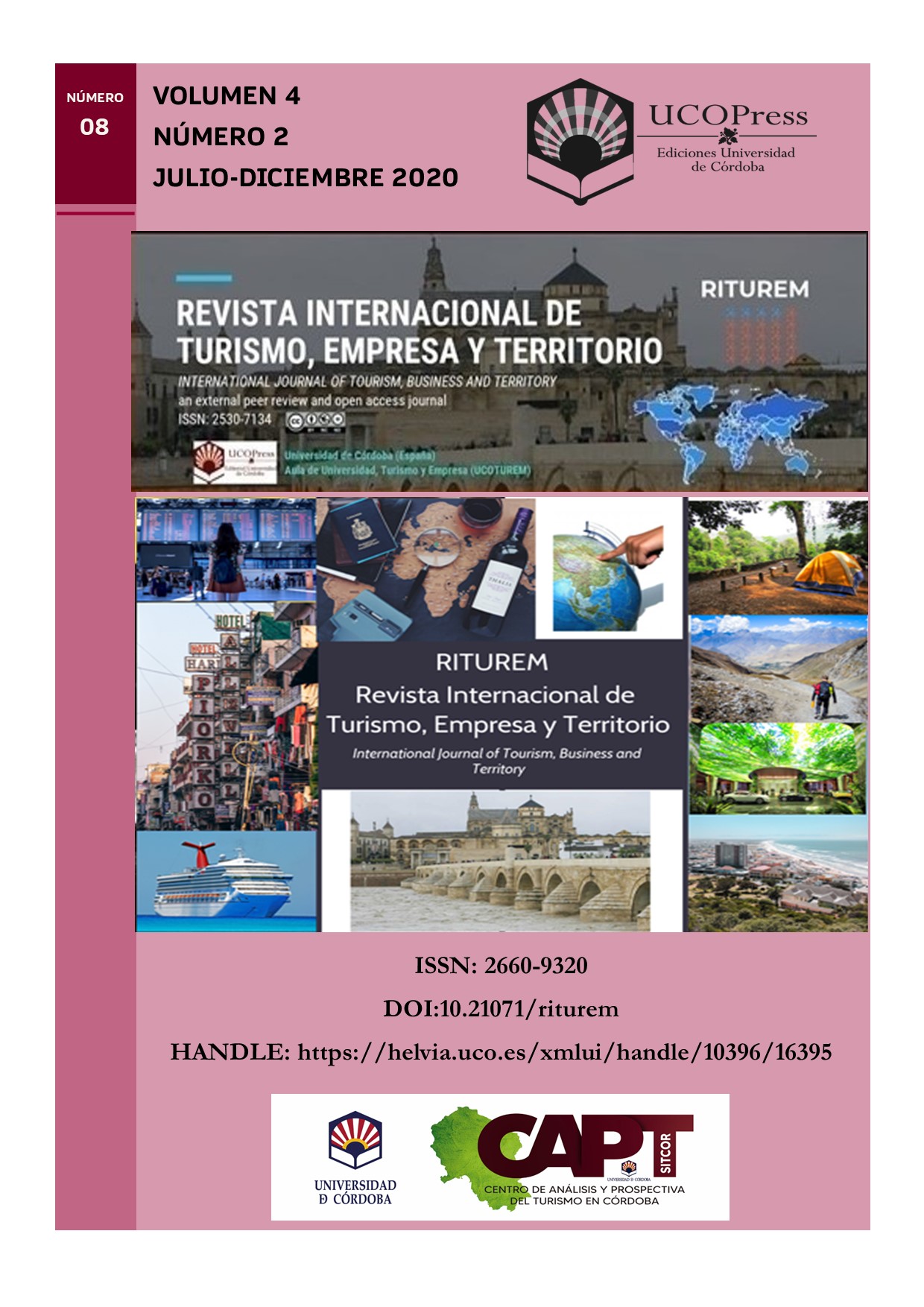Argentine National Parks nominated as World Heritage Sites. An analysis of their tourist attractiveness
Main Article Content
Abstract
Since 1972, UNESCO has included in its Heritage list geographical areas that, due to their cultural and/or natural characteristics, are preserved. When a National Park is declared a World Heritage Site (WHS), its hierarchy in the conservation of biodiversity and, presumably, the flow of tourists increases. In Argentina, there are 13 WHS declared, and four constitute National Parks (UNESCO, 2019). Thus, the aim of this research is to study whether the arrival of tourists is higher in those Argentine National Parks (NP) nominated as WHS. The methodology is descriptive, working with secondary information from the National Parks Directorate and the Tourism Statistical Yearbook. The descriptive analysis studies the distribution of the parks in the Argentine territory, the arrival of tourists, their concentration and growth during the period 1991-2015. The results show that tourism in NP has grown exponentially during the period analyzed, with a marked preference for the NP declared WHS (Iguazú, Talampaya, Los Alerces and Los Glaciares).
Keywords: National Parks, World Heritage Site, Tourism, Argentina.
Downloads
Article Details
Copyright Notices Proposed by Creative Commons
Proposed policy for journals offering deferred open access
Those authors who have publications with this journal, accept the following terms:
1. The authors will retain their copyright and guarantee to the journal the right of first publication of their work, which will be simultaneously subject to the Creative Commons Recognition License CC BY-NC 4.0 (Creative Commons — Attribution-NonCommercial 4.0 International — CC BY-NC 4.0 ) hird parties to share the work provided that its author and its first publication is indicated this journal and no commercial use is made.
2. Authors may adopt other non-exclusive licensing agreements for the distribution of the published version of the work (e.g., deposit it in an institutional telematics file or publish it in a monographic volume) provided that the initial publication is indicated in this journal.
3. Authors are allowed and recommended to disseminate their work over the Internet (e.g. in institutional telematics files or on their website) before and during the submission process, which can produce interesting exchanges and increase citations of the published work. (See The effect of open access: http://opcit.eprints.org/oacitation-biblio.html.
